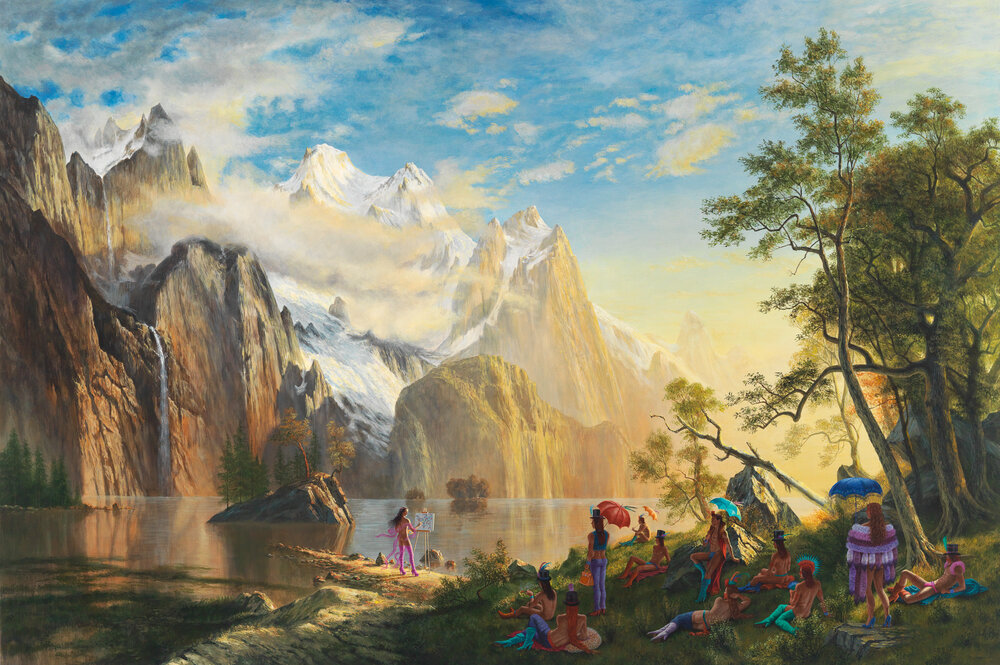
Kent Monkman is a Canadian artist of Cree ancestry whose subversive and oftentimes controversial paintings explore issues concerning the exploitation and misrepresentations of the First Nations in North America. His eclectic mash-up of art historical references, role reversals and revised narratives challenges the Western art canon head on — from the romantic landscape paintings of Thomas Cole and Albert Bierstadt to the cubist works of Pablo Picasso. Monkman has exhibited at the Montreal Museum of Fine Art and the Museum of Contemporary Canadian Art in Toronto, and is represented in numerous public and private collections, including the National Gallery of Canada and the Smithsonian’s National Museum of the American Indian.


Monkman’s work is largely inspired by 19th century depictions of Native Americans — specifically the paintings of George Catlin, who in the 1830s was known for his portraits of Plains Indians yet portrayed his subjects as members of an idealized and static culture. Monkman told Huffington Post, “Catlin and others were obsessed with capturing the peoples who wouldn’t exist for the future.” The artist also noted, “Museums have contributed to this idea. As a kid I would go down to the museum in Winnipeg and see indigenous cultures represented in this perfect state. This is what we were supposed to be. And then I’d step out onto the street and see skid row and the fall out of colonization.”



The artist’s paintings are perhaps best known for their mimicry of historical works of art, appropriating imagery as a form of dialogue with the past to address the ever-relevant issues of stereotypes, cultural oppression, gender and sexuality, and misrepresentation of indigenous cultures. In one recent exhibition, titled Urban Res, the artist places cubist figures from Picasso’s paintings into urban environments, which act as the settings for violent upheaval. These subjects, which Monkman describes as “representative of the compression of indigenous cultures,” are presented as casualties of violence and disease, tended to and mourned by groups of indigenous youths.


In another exhibition, Expelling the Vices, Monkman recreates scenes from 19th century paintings using allegories from Western culture to “reference the lies, failed promises and broken treaties perpetuated by the Canadian and US Governments against indigenous people.” Starring in the roles of powerful and mythological women is Monkman’s spikey-heeled alter ego Miss Chief Eagle Testickle, a trickster figure who represents the third gendered figure in Native American cultures and is featured in many of the artist’s works.


Monkman is a multimedia artist, who aside from his paintings has produced works in the form of film/video, performance and installation. The artist is currently participating in a group exhibition titled The Position We’re In at the Kansas City Art Institute through September 2, 2016. The artist also has two upcoming exhibitions: The Four Continents at the Kitchener Waterloo Art Gallery, and “Shame & Prejudice: A Story of Resilience” at the Art Museum Toronto.




 John Greenwood
John Greenwood Australian artist
Australian artist